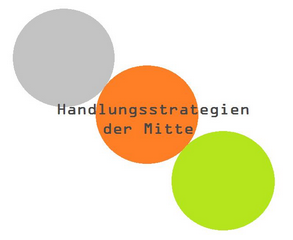Action Strategies of the Middle of Society
The research project "Action Strategies of an 'Insecure' Middle Class. A Cohort Comparison" investigated the question how far the crisis diagnosis of an increasingly insecure middle class is accurate.
According to this study, the middle class, despite its economic and educational resources, is less protected from precarious living conditions than it was decades ago; maintaining status (even of one's own children) seems less self-evident in the face of developments such as the deregulation of gainful employment and the restructuring of the welfare state.

Two methodological approaches - a secondary analysis (longitudinal SOEP data) and open interviews with two occupational groups - were used to investigate how insecure qualified middle-class workers feel and what people do concretely to counter insecurities. Do they fight against them, or are tinkering biographies gaining normalcy?
The qualified middle class is more secure than expected.
According to the quantitative sub-study, major worries about one's own economic situation increased between 2000 and 2011, but neither linearly nor to an enormous extent, nor disproportionately in a strata comparison. Middle strata worry to a medium extent in a strata comparison, with similar trajectories across strata. The analysis of action patterns showed - with methodological limitations - few overarching patterns. It cannot be assumed from a homogeneously insecure middle class.
This is also confirmed by the qualitative sub-study: In addition to one type that feels insecure and fights insecurity accordingly (by themselves or with the help of their partner), there are other types that do not feel insecure professionally or are able to endure professional insecurity well, at least in phases. Accordingly, different patterns of action emerge, which, for example, focus on professional profile building or career or are geared to 'avoiding insecurity' as a priority despite dissatisfaction. It cannot be assumed that there has been a change in habitus toward a widespread normality of unpredictable biographies; despite all the heterogeneity of the cases, expectations of security are often still present. Even if this is not always associated with optimism about shaping or planning for the future, the qualified employed certainly often have the impression that they have resources and options for maintaining their status in the center of society.
Whether these attitudes and patterns of action carry through working life is another question. Therefore, the results do not imply a complete rejection of any crisis diagnosis for qualified workers or the middle class per se.
Project duration
2011 until 2014 (24 months)
Team
Management | Prof. Dr. Nicole Burzan |
Employees | Dr. Silke Kohrs Ivonne Küsters M.A. |
Publications (Selection)
Burzan, Nicole; Kohrs, Silke; Küsters, Ivonne (2014): Die Mitte der Gesellschaft: Sicherer als erwartet? Weinheim: Beltz Juventa
Burzan, Nicole (2014): Unsichere Zukunftsperspektiven in der Mittelschicht? – Methodische Überlegungen und ausgewählte Befunde. In: Behnke, Cornelia/Diana Lengersdorf/Sylka Scholz (Hg.): Wissen – Methode – Geschlecht: Erfassen des fraglos Gegebenen, Wiesbaden: Springer VS, 175-188.
Burzan, Nicole; Kohrs, Silke (2012): Vielfältige Verunsicherung in der Mittelschicht – Eine Herausforderung für sozialen Zusammenhalt? In: Pries, Ludger (Hg.): Zusammenhalt durch Vielfalt? Bindungskräfte der Vergesellschaftung im 21. Jahrhundert. Wiesbaden: VS, 101-119.


![[Translate to English:] [Translate to English:]](/storages/zentraler_bilderpool/_processed_/b/9/csm_Spektralringe_225cc86301.jpg)
![[Translate to English:] [Translate to English:]](/storages/zentraler_bilderpool/_processed_/9/c/csm_Tisch-Laptops_ab150b7175.jpg)